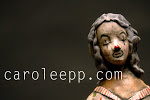by Carole Epp | Aug 25, 2015 | call for entry, emerging artist, job posting, monday morning eye candy, movie day, residency opportunity, show us your influences, technical tuesday
We are pleased to be holding our eighth annual international call for entries, Beyond the Brickyard.
The selected works will be exhibited at the Archie Bray Foundation in
January 2016. This year’s exhibition will be juried by 2015 visiting
artist Peter Beasecker.
Specifications and Applying
Specifications and information about applying are listed online at http://www.archiebray.org/gallery_exhibitions/BTB_call_for_entries.html.
All submissions to Beyond the Brickyard will only be accepted online.
Submissions must be received online by September 15, 2015, midnight MST.
Entry Fee
The cost of entering Beyond the Brickyard is $35 USD for up to 3 works. All major credit cards are accepted.
Awards
From the successful entrants, three awards will be selected:
Juror’s Choice Award: $400
Director’s Choice Award: $400
People’s Choice Award: $100
Sales Commission
Artists will receive 55% commission of their work sold during exhibition, while ABF will retain 45%.
Exhibition Schedule
By applying all applicants agree to the following schedule if selected to exhibit:
► Applications due September 15, 2015
► Entrants notified of jury results by email no later than October 31, 2015
► Work to be received by Archie Bray Foundation by November 18, 2015
► Work exhibited in Beyond the Brickyard,
January–March 2016
Questions about your application?
by Carole Epp | Aug 20, 2015 | Uncategorized
Thanks to Vipoo for these images from the exhibition.
 |
| Kwon Miok and Kim Seungtaek two curators |
 |
| Thomas Quayle |
 |
| Vipoo Srivilasa |
 |
| Ramesh Mairo Nithiyendran |
 |
| Alison Smiles |
 |
| Heysook Jeun |
Find out more about the mentorship program, the exhibition and the participating artists here:
www.claymentoring.com
by Carole Epp | Aug 19, 2015 | call for entry, emerging artist, job posting, monday morning eye candy, movie day, residency opportunity, show us your influences, technical tuesday
Woven Clay from robotsinarchitecture on Vimeo.
Woven Clay
by J. Friedman, H. Kim, and O. Mesa (Harvard GSD)
The Standard definitions and models of additive manufacturing, such
as those outlined by ASTM (2012), often assume a layer-by-layer
deposition of a material onto a flat surface. The research presented
looks to explore what alternative formal opportunities that may arise
when challenging these assumptions concerning additive manufacturing.
Beginning with the robotic clay coil extrusion process, the research
uses a bottom-up approach that asks what types of forms and scales can
be generated with this process. Prototypes incorporate techniques such
as weaving as a means of fabricating panels that celebrate the inherent
nature of the coil itself. The woven patterns are designed to
incorporate both assembly logics and performance qualities such as light
permeability across a façade component. Through a series of full-scale
prototypes focusing on a specific building application, this research
works to resolve the seemingly conflicting nature between the inherent
mutability of the clay material and the high level of control granted by
robotic fabrication processes.
This clip was accepted as a video submission to Rob|Arch 2014 – the
international conference on robotic fabrication in architecture, art,
and design.


















